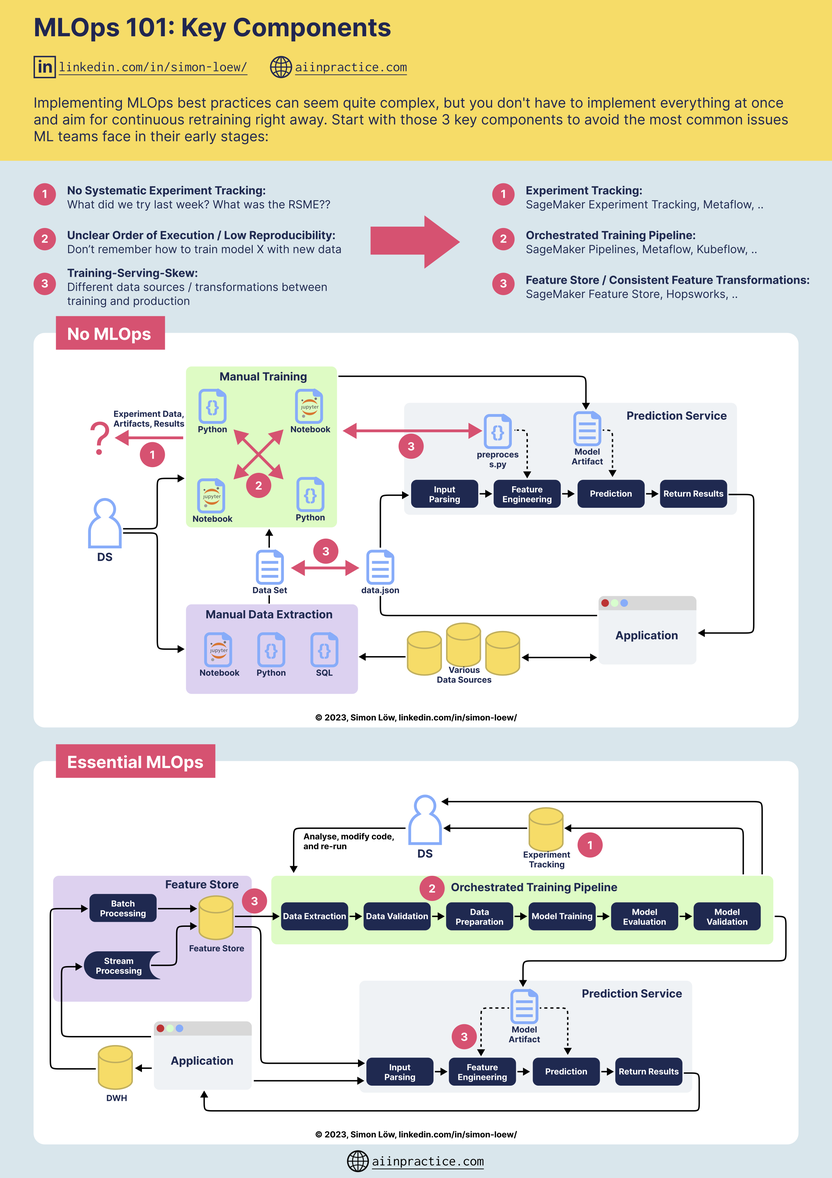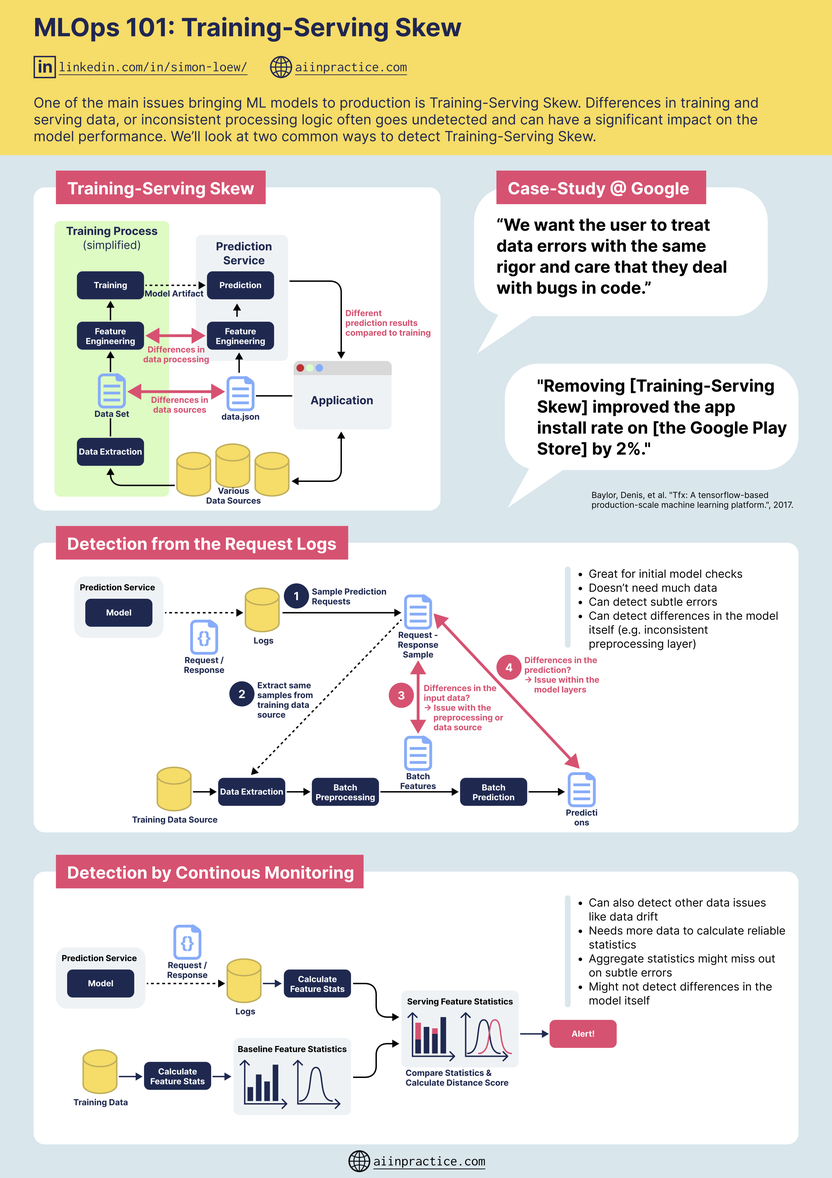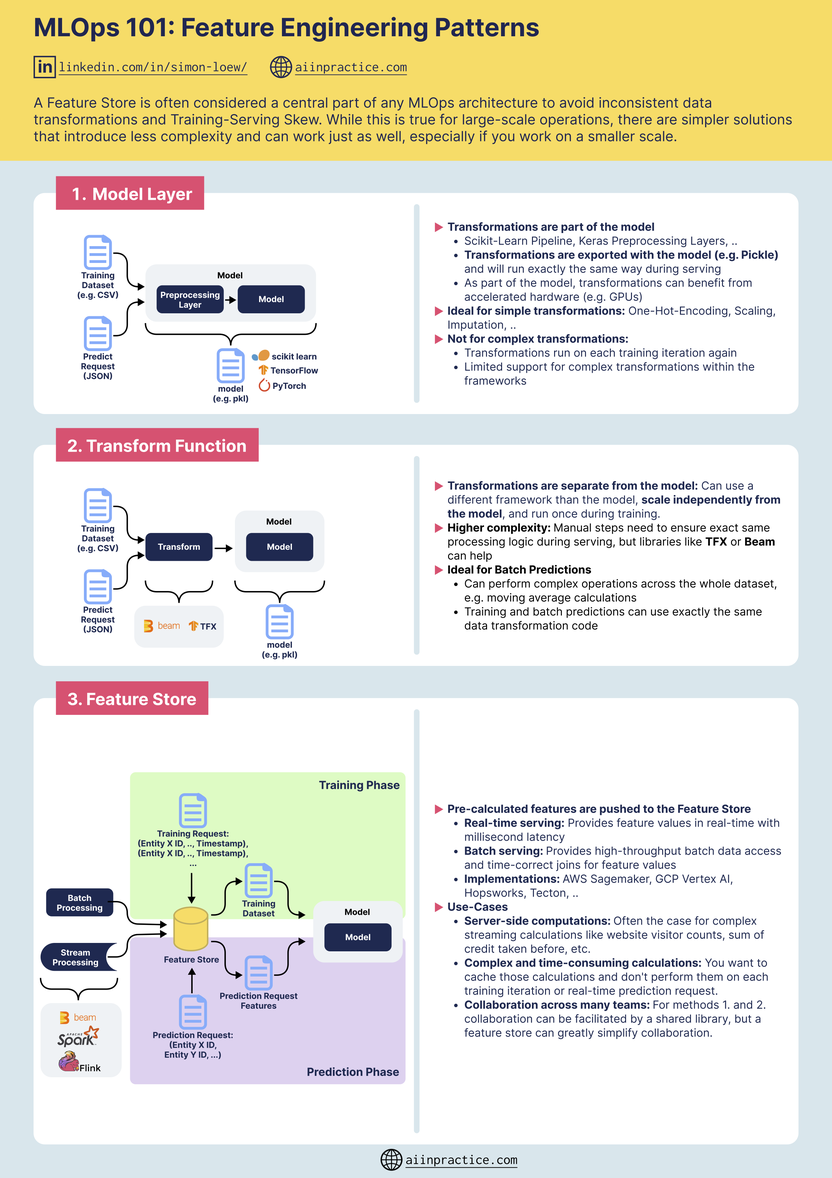MLOps 101
By Simon Löw |
MLOps 101 introduces MLOps key concepts in short and concise info graphics:
New diagrams will be shared on LinkedIn first. Follow me there to get notified about new posts about MLOps and ML Engineering.
Get started with MLOps
Implementing a full MLOps Architecture can be quite complex and overwhelming. In my experience, it's best to start small and incrementally add components when you actually need them. Full automation and continuous re-training is over-hyped and often not needed.
The 3 key components I would start with are:
- Experiment Tracking
- Training Pipeline Orchestration
- Feature Store

Detect Training-Serving Skew
Training-Serving Skew can massively impact your model performance, but often goes unnoticed without the right checks and monitoring in place. Let's explore how we can easily detect those issues.

You don't always need a Feature Store
MLOps architecture recommendations often include a Feature Store as an essential component to avoid inconsistent data transformations and Training-Serving Skew.
This makes sense for large-scale operations. But there are less complex solutions that can work just as well, especially if you operate on a smaller scale.

Like the post? Share it!

Simon Löw
Machine Learning Engineer - Freelancer
I'm an ML Engineer freelancer focusing on building end-to-end machine learning solutions, including the MLOps infrastructure and data pipelines.
I've worked with various startups and scale-ups, including Klarna and Depict, building automated ML platforms, credit risk models, recommender systems, and the surrounding cloud infrastructure.
On this blog, I'm sharing my experience building real-world end-to-end ML solutions.
Follow me on LinkedIn